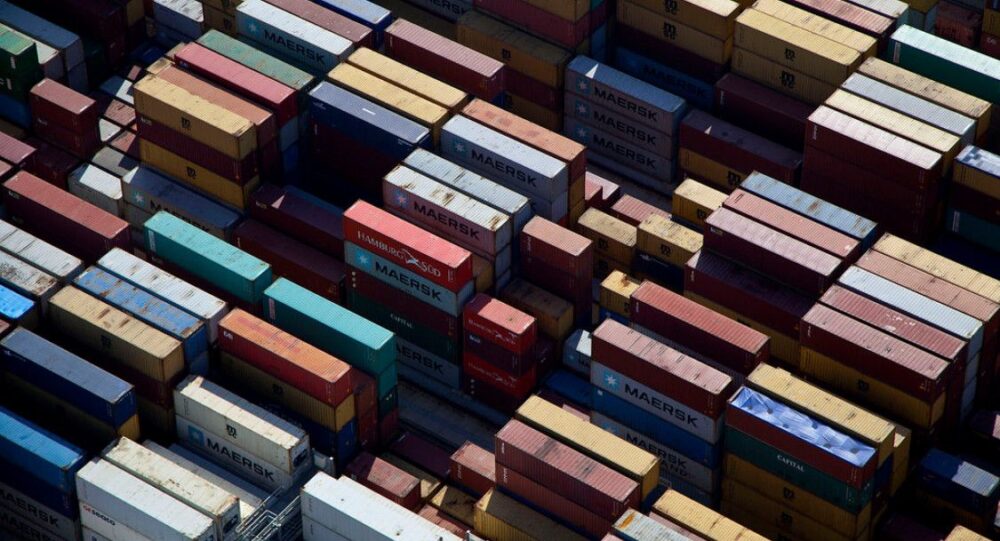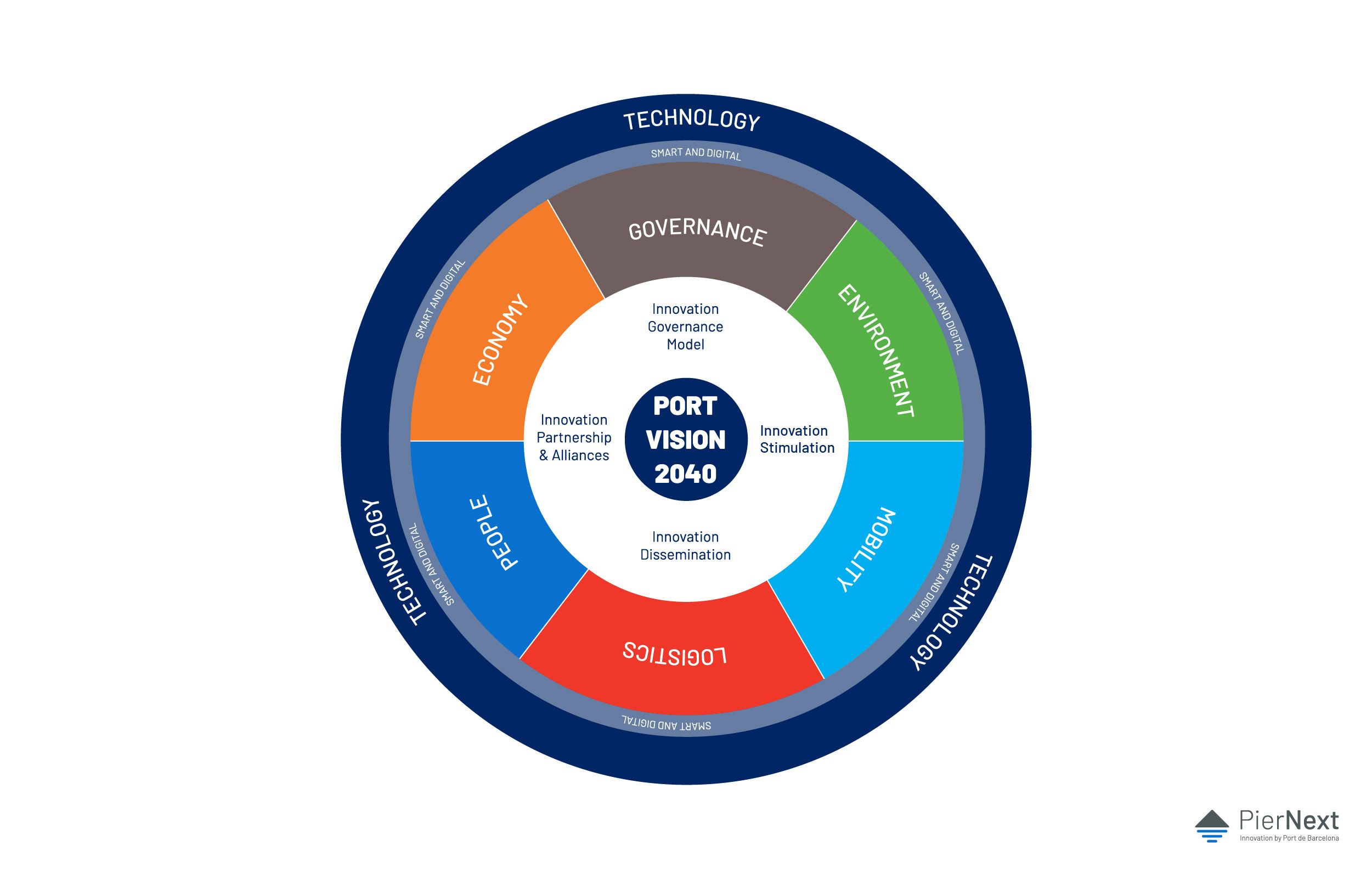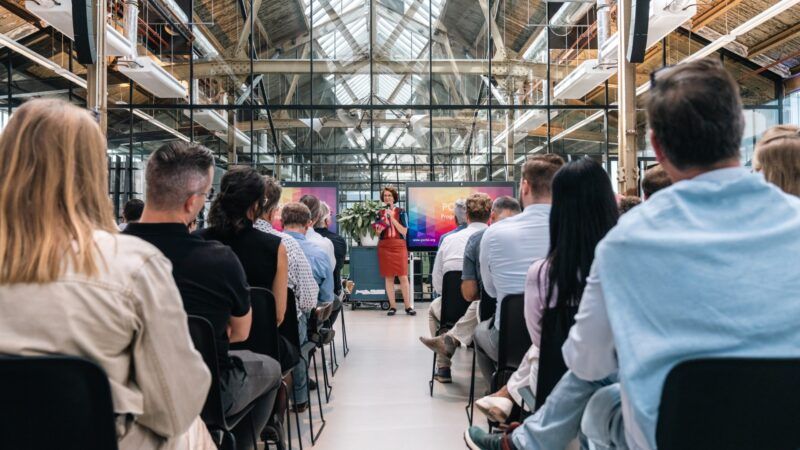 Innovation is a key element for ports competitiveness. [Image by Port de Barcelona]
Innovation is a key element for ports competitiveness. [Image by Port de Barcelona]
Port of Barcelona Innovation Model
In ports, the innovation process should serve to create, develop and turn new ideas into value propositions tailored to the current and future needs of the port community, port clients, other stakeholders and society in general.

Carles Rúa is the Chief Innovation Officer at the Port de Barcelona and Director of the Master’s degree in Executive in Supply Chain Management at the UPC.
 Innovation is a key element for ports competitiveness. [Image by Port de Barcelona]
Innovation is a key element for ports competitiveness. [Image by Port de Barcelona]
In the case of Port de Barcelona, we believe innovation should have a series of attributes in order to be truly effective:
- Sustainable innovation, taking into account the three types of sustainability: economic, social and environmental.
- Open innovation, going beyond internal sources to also harness external sources, such as clients, competitors, academia and research centres as sources of new ideas and concepts. This is particularly important at a port where success doesn't depend on one single stakeholder but on the coordinated efforts of the whole port community.
- Collaborative innovation, as the end goal of a port is to develop efficient supply chains and this implies developing collaborative business, and thus innovation, models.
- Driven by demand, meaning it understands clients' current and future needs and develops new products and services to meet and exceed them. Innovation must focus on unmet market needs.
- Innovation aligned with strategy, as the innovation process shouldn't be an end in itself but a means to achieve the goals the port has set.
- Strongly rooted in technology, especially fields like ICT, driverless vehicles, IoT, AI, robotisation and automation.
Nowadays, ports must understand that innovation is key to their competitiveness and, therefore, they must have the tools to facilitate its development in the port community. This is why the Port of Barcelona has developed its own innovation model, the ‘Port of Barcelona Innovation Steering Wheel’, the main elements of which we will look at below.

The core of innovation must be very long-term planning, which in our case will be put down in the Port Vision for 2040. This vision will identify the various future scenarios the port could face and establish lines of actions that will make it possible to move towards the desired future. It isn't so much about laying out specific action plans, this will come in the strategic plan. It is a question of identifying directions in which port activity may develop to help it reach the desired future.
To create this vision for the future, we have to have instruments to help us channel the efforts of our surroundings through this Vision. We have identified four groups of elements:
- Firstly, management structures, which allow the Port of Barcelona and its port community to coordinate their innovation efforts and set priorities. In our case, we opted for more informal structures, like committees and work groups, instead of traditional hierarchical structures.
- Secondly, as the port considers the concept of open innovation its only innovation model, it is necessary to forge alliances and agreements with our surroundings, first in the port community but also with our end customers, universities and research centres, with other public administrations and also with other ports, even our competitors.
- Thirdly, it is necessary to stimulate and actively promote innovation in our surroundings. This includes developing an innovation ecosystem around the port of Barcelona that helps innovative talent grow, new ideas sprout and new business ideas to become start-ups to help us reach this Vision. Fortunately, Barcelona has a highly significant innovation ecosystem and various rankings put it among the top 10 smart cities in the world (e.g. the Eden Strategy Institute Top 50 Smart City Governments). So, more than creating a new innovation system for the port, we must seek out synergies with those that already exist and coordinate efforts with them.
- Finally, it is necessary to spread the word about all this innovative activity. PierNext, the Port of Barcelona knowledge hub, is one initiative working on this, but others include participation in the ChainPort Academy, creating the Escola Europea de Transporte Intermodal and other collaborations with schools and universities that easily fall within this framework.
The core of innovation must be very long-term planning, which in our case will be put down in the Port Vision for 2040. This vision will identify the various future scenarios the port could face and establish lines of actions that will make it possible to move towards the desired future.
The next question we have to ask is where should we apply this innovation? The answer lies in the concept of a smart port and its dimensions, which Barcelona has also adapted from the smart city concept. In fact, there are several experts that speak about the six main dimensions or areas of action for smart cities: living, mobility, people, economy, government and the environment.
All of these facets of a smart city also apply in a port, where there are also issues with mobility and the environment for example, except one: living. In fact, there shouldn't be living spaces in the Port of Barcelona, but if we draw comparisons with what actually ‘lives’ in the port, cargo, we can substitute the concept of living for logistics, and get the six main areas of innovation in a port: logistics, mobility, economy, people, government and the environment. In addition to these six areas of innovation, for practical reasons we've added a seventh transversal area: technology, which supports all the rest.
In conclusion, although Barcelona has traditionally been considered an innovative port, the growing complexity of the logistics and port sector, the evolution of transport models, especially in the shipping industry, and the appearance of new, disruptive elements force us to take a strategic position on the innovation process, which in our case has taken shape in the work model we presented: the ‘Port of Barcelona Innovation Steering Wheel ’.




